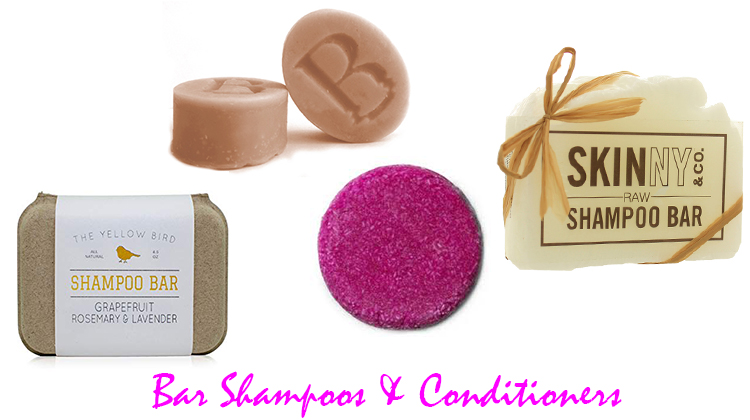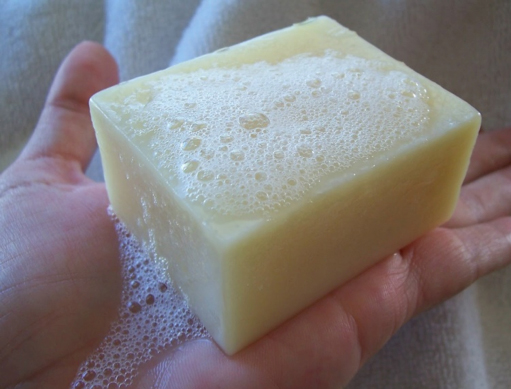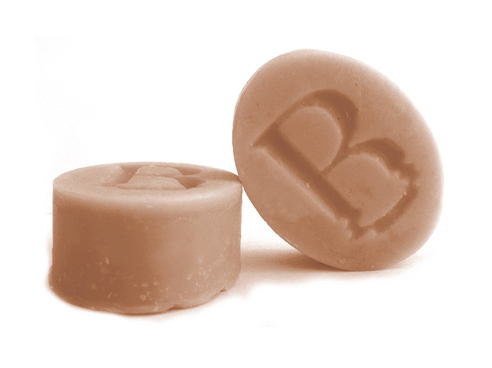
by Rachel Garcia
The beauty of the beauty industry is that sometimes products start out one way, then evolve with new and exciting formulas and packaging, and then sometimes slowly evolve back to their original way and use. This is the case with bar shampoos and conditioners. Although they may sound new, bar shampoo soaps were used before detergent-based shampoos were invented in the 1940’s. However dependent we are on our favorite salon-based or drugstore shampoo and conditioner, considering a switch to a bar version offers two major benefits. First is the elimination of the detergents used in liquid shampoos. These include sodium lauryl sulfate (SLS), sodium laureth sulfate (SLES) and ammonium lauryl sulfate, which can end up stripping the natural oils on the strands, make the scalp drier, strip color and, for some, lead to allergic reactions. The second is the fact that shampoo and conditioner bottles are unfortunately a big contributor to excess plastic waste. Although many are recyclable, some statistics estimate that only 1 in 5 consumers recycle their shampoo and conditioner bottles, with almost 552 million of plastic bottles ending up in landfills.
There are various other benefits to using a bar shampoo and conditioner, including:
- No additives – many formulas rely on naturally derived oils and botanical ingredients
- Eco friendly – not only do they eliminate the bottle, some brands use only paper or no packaging at all
- Travel friendly – no spills or leaks
- Budget friendly – the average shampoo bar can last between 60-80 uses. Most over-the-counter shampoos are 97% water
- Some hair types may not even need a conditioner afterwards, thanks to hydrating ingredients including cocoa butter, shea butter and jojoba oil
- Multi-tasking – can be used on both hair and body
Ingredients used in bar shampoos include:
- Olive oil
- Mango butter
- Shea butter
- Coconut oil – a surfactant that gently lifts away oils and dirt
- Cocoa butter
- Jojoba and babassu oil
Shampoo bars tend to be:
- Paraben-free
- Sulfate-free
- Phthalate-free
- Cruelty-free
There are three types of bar shampoos:
- Cold-pressed – usually contain natural oils and are detergent-free. Usually made by home crafters and natural product companies.
- Glycerin based – gentler and pH balanced but may not lather as much.
- Solid surfactant – provide the best lather, also pH balanced but may contain trace amounts of SLS or SLES.

How to Use:
- Thoroughly wet hair
- Create a lather in hands or rub the wet bar directly onto head to create a lather
- Rake fingers through hair
- Gently massage scalp to create more lather. To prevent tangling, avoid piling hair on top of head and mushing the strands. Work from the top down.
- Rinse completely to avoid any possible build-up
Despite the benefits, there are a few possible cons that can occur:
- Possible waxy build-up. The soap in a bar shampoo is in pure form and can react with the minerals in the water to form the same type of soap scum that’s found in showers and bathtubs.
- Tangled hair for long or porous (curly) hair types – rubbing the bar directly onto hair can cause tangling for some.
- A “transition period” – since most of us have used a detergent based shampoo all our lives, switching to a bar shampoo may cause the hair and scalp to feel drier and stickier. Beauty experts advise to use an apple cider vinegar rinse (one-part vinegar and two-parts distilled water) at least 1-2 times per month (or as needed) to remove the build-up and restore the pH of the scalp. Also, it may take 2-3 months for some hair types to fully adjust to a bar formula.
Brands to try:
Skinny & Co. Chemical Free Shampoo Bar with 100% RAW Coconut Oil, Non-toxic (1 Bar) (Rosemary) ($14.95) – made with 100% saponified raw coconut oil and an invigorating rosemary scent.
Lush Jason and the Argan Oil ($11.95) –a strand-smoothing, rose-scented bar that contains conditioning and repairing Argan oil.

Peppermint Shampoo Bar Soap. Sulfate Free. Natural and Organic Ingredients. Anti Dandruff, Itchy Scalp, Psoriasis. Includes Conditioning Argan and Jojoba Oils. ($10.00)– a blend of peppermint, kaolin clay and seat salt that is ideal for dry, oily and fine hair. Also addresses sensitive scalp, dandruff and psoriasis.
Hair Food Conditioner Bar ($8.99) – hydrates with cocoa butter, jojoba and coconut oil and strengthens with wheat germ oil, completed with a chocolate scent.

Rachel Garcia has written for Modern Latina since 2006, in addition to Carefair.com. Many of her articles reflect her interest and specialty in skin, beauty, and nutrition. Rachel received her Bachelor’s degree in Nutrition from San Jose State University.


